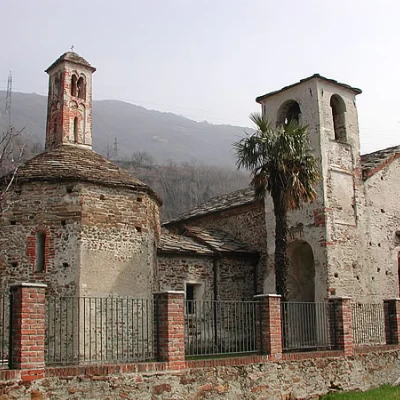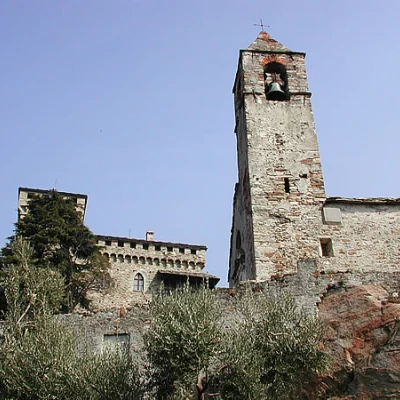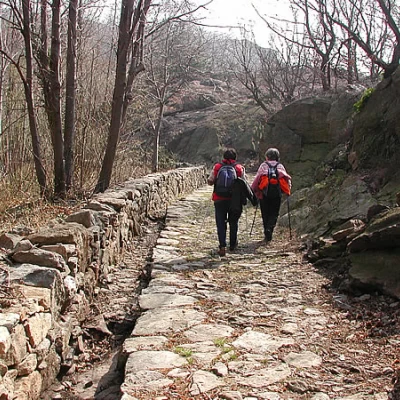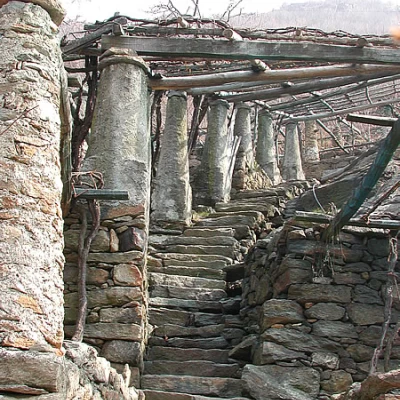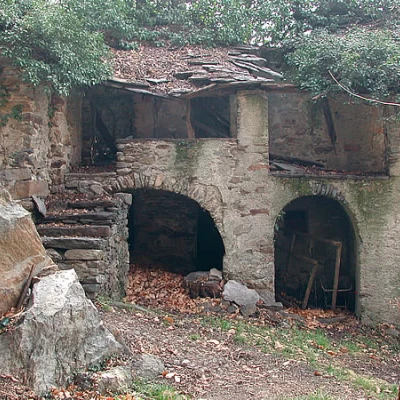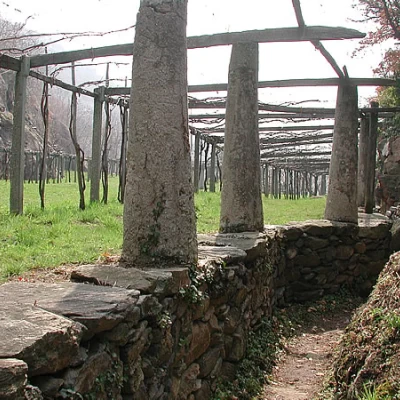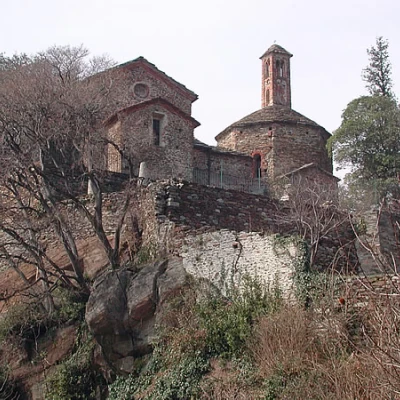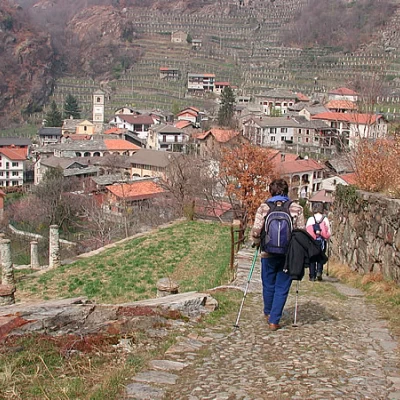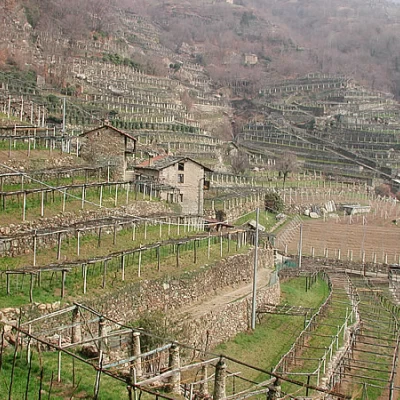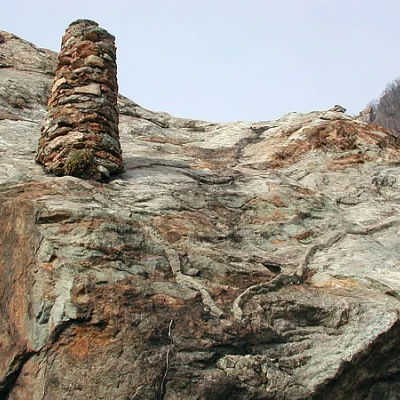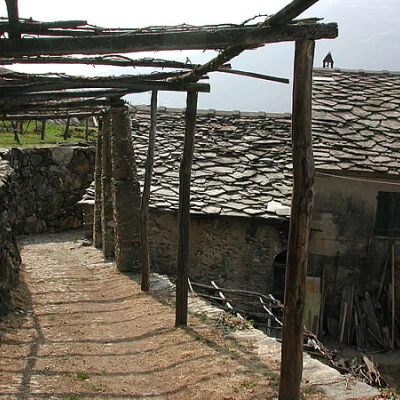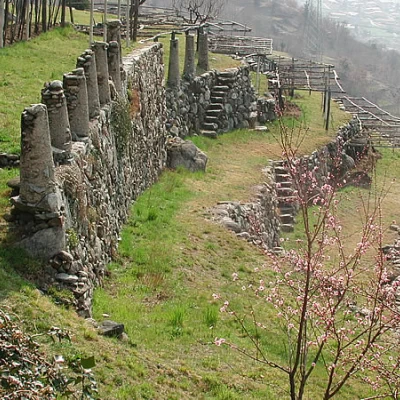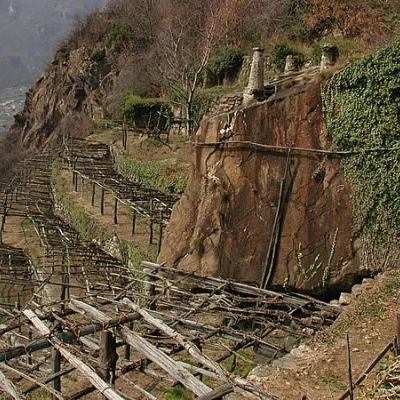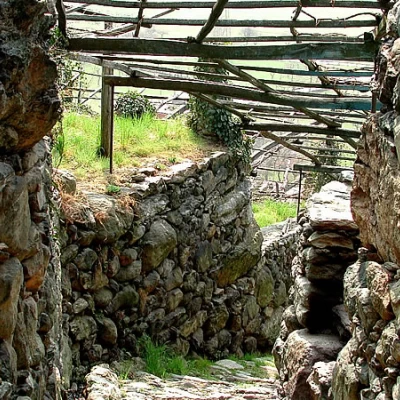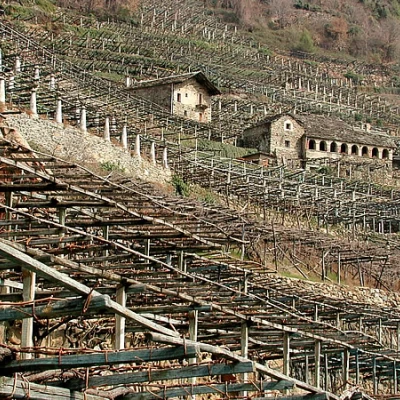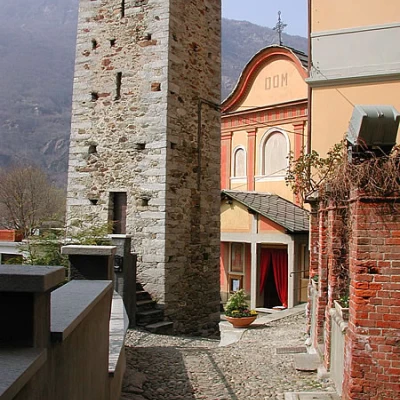Daniel Tower
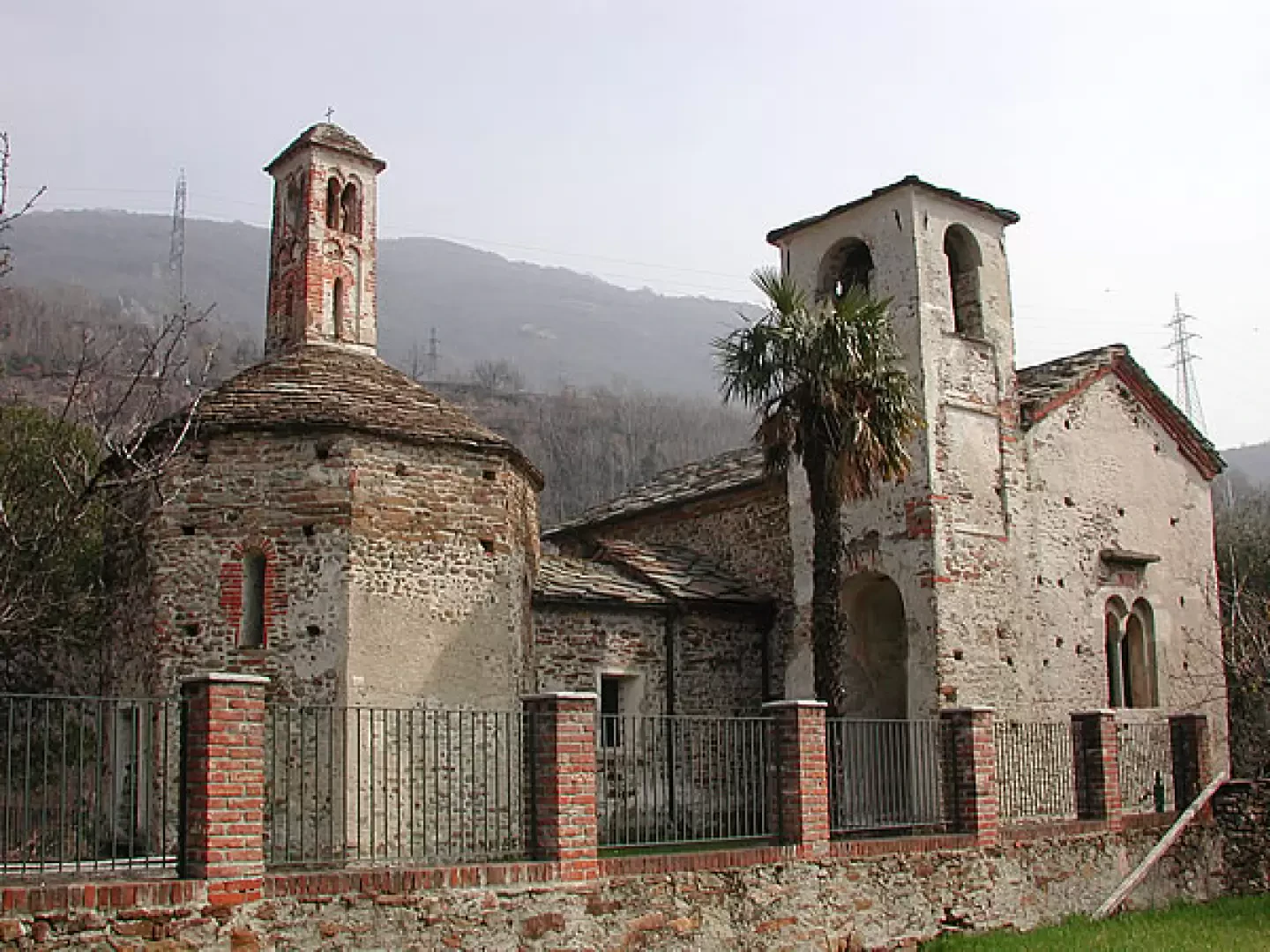
Introduction
This tour has so far been one of the FAI's spring day destinations; you walk along beautiful mule tracks through the vineyards from Montestrutto to Torre Daniele passing by the Pieve di San Lorenzo and Cesnola, with one eye on the landscape and one on history.
Description
Leaving the car at Montestrutto (282 m) (if it is not FAI day, also in one of the car parks on the road, near the bend), we drive between the houses of the hamlet and pass by the wash-house, fed by an irrigation ditch (rusa), with a beautiful stone basin; One climbs up towards the church of San Giacomo and the castle along a mule track to the left of which, at the beginning, one finds the 'fontana dle sape', a small hollow cut into the rock, which was used as a drinking trough, but also to soak the hoe handle to inflate it before starting work in the fields, so that the handle would 'fix' the iron tool. The present castle of Montestrutto took the place of an older fortification. On the way up we come across the old cemetery, in use until 1902, centuries-old olive trees, and the small church, which is well worth a visit and would deserve proper restoration; the very old frescoes are badly damaged... From the church we return to the crossroads below and continue left. The irrigation ditch that flanks the footpath is paved with pebbles and stone chips, to prevent the flow of water from damaging it, and in a steep section of the path we notice the uphill and downhill track for sledges. You pass a group of ruined dwellings, probably destroyed by a landslide, with beautiful vaults, including a dwelling with a date of 1715, and you notice against a rock a 'balma' leaning against a large stone, still used today for sheltering cattle. We enter a small valley whose bottom has been filled in and drained; everything here is the work of man, who has made immense efforts to convert even the smallest plot of land to agriculture. All around us are continuous terraces, cultivated with vines thanks to the heat released by the surrounding stones; the path climbs to the Pieve di San Lorenzo, built on rocks smoothed by glaciers. The parish church welcomes us with its terracotta windows and its monuments; after the visit, exit, cross the road and take the path again beyond the churchyard of the Church of Madonna delle Grazie (so far, an hour and a half without counting the time for the visit to the parish church). A mule track with the Stations of the Cross climbs up to the church from below; turn clockwise behind the building, take the tarmac road to Cornaley, and then turn left onto the Munt dla Peia road. The path runs alongside a drystone wall built into the side of a rock, and then leads to wide terraces, from which we can see Cesnola, nestling in the vineyards, in a beautiful basin, and above the hamlet the ruins of the castle. We descend to Cesnola, and on FAI day it is possible to visit a beautiful lathe, privately owned; from this point onwards, for a part, the itinerary follows that of the Cesnola ring; we pass in front of the stone fountain dating from 1850, turn left, under the arch next to the church, then right, and left again under the wash-house; the tupiun are noteworthy, on the terraces reached by stone steps; carved into the thickness of the wall we notice a drinking trough. The mule-track climbs up behind the castle, the ruins of which can be reached by a small path after some renovated huts; don't get too close to the crumbling walls...; the little valleys on the right as you climb up, have been filled in with soil for cultivation, but a whole series of channels have been laid out to drain the land. The footpath in this section is beautiful. As we gain height, the panorama widens: behind us, the battlements of the de Palma di Cesnola castle soar among the trees, while below us Torre Daniele emerges, at the foot of another basin. The works carried out in this area are cyclopean: drystone walls support the terraces, niches have been carved in the thickness of the walls; we pass under two monoliths that allow us to reach the vineyards; on one stone is carved the date 1837. One reaches a lime kiln dated 1849, on the right, and then one arrives at the Vigne locality; also on the right there is a large rock with a raised lime border made to channel the water that flowed over the surface and cause it to collect in a basin, where a special tube diverted it into a container. Nothing was lost... On the right and left you can see two balmetti, storerooms made under the huge stones for storing foodstuffs, cellars and storage. The houses are made of stone, very beautiful, and the walls here are also made of round stones, because they were taken from the nearby stream, although they are more difficult to build on. At this point we abandon the mule track for Chiaverina and Trovinasse (we are at an altitude of about 500 metres), and take the one that descends towards Torre Daniele; in this section, a house with Canavese arches, a tupiun on the roof of lose stones of another, and the small church of Pissa Polla undergoing restoration are all notable. We descend along the terraces, alongside the tupiun, under the pergolas, overlooking the valley floor, amidst flowering mimosas and tulips in spring. We come across another Canavese house with arches, perhaps the most beautiful in the area, and we quickly go from one terrace to another, under a continuous pergola of vines, amidst the walls. We soon reach Torre Daniele, with its church and high bell tower, and its ancient houses, whose name is said to have originated in the 5th century from a Benedictine monastery whose founder was named Daniele. The current church dates back to the mid-19th century, but it seems that the complex has indeed ancient origins, and was important for the entire valley, to the point that its cemetery also welcomed the dead from the Gressoney valley. On FAI day a minibus takes you back to the car park (2 hours from the Pieve di San Lorenzo, 3h30' in total).
Photo gallery From Montestrutto to Torre Daniele - © 2008 Maria%20Grazia%20Schiapparelli From Montestrutto to Torre Daniele - © 2008 Maria%20Grazia%20Schiapparelli From Montestrutto to Torre Daniele - © 2008 Maria%20Grazia%20Schiapparelli From Montestrutto to Torre Daniele - © 2008 Maria%20Grazia%20Schiapparelli From Montestrutto to Torre Daniele - © 2008 Maria%20Grazia%20Schiapparelli St. Giacomo's Church and Montestrutto Castle Beginning of the mule track Tupiun and stairs Landslide area Valletta From Montestrutto to Torre Daniele - © 2008 Maria%20Grazia%20Schiapparelli From Montestrutto to Torre Daniele - © 2008 Maria%20Grazia%20Schiapparelli From Montestrutto to Torre Daniele - © 2008 Maria%20Grazia%20Schiapparelli From Montestrutto to Torre Daniele - © 2008 Maria%20Grazia%20Schiapparelli From Montestrutto to Torre Daniele - © 2008 Maria%20Grazia%20Schiapparelli Pieve San Lorenzo The beautiful basin of Cesnola Vineyards around Cesnola How to collect rainwater Supporting walls From Montestrutto to Torre Daniele - © 2008 Maria%20Grazia%20Schiapparelli From Montestrutto to Torre Daniele - © 2008 Maria%20Grazia%20Schiapparelli From Montestrutto to Torre Daniele - © 2008 Maria%20Grazia%20Schiapparelli From Montestrutto to Torre Daniele - © 2008 Maria%20Grazia%20Schiapparelli From Montestrutto to Torre Daniele - © 2008 Maria%20Grazia%20Schiapparelli A world made of stairs Down to the last centimetre.. A world made of stone Delicate Canavese architecture Torre Daniele Bibliography: * FAI Spring Day brochures Cartography: * Dora Baltea Canavesana, Valchiusella, Valle Sacra - Map of paths 1:25000 - Excursionist & Monti editors, 2007 * Central Geographic Institute (IGC) 1:50000 - number 9 Ivrea Biella Lower Aosta Valley
